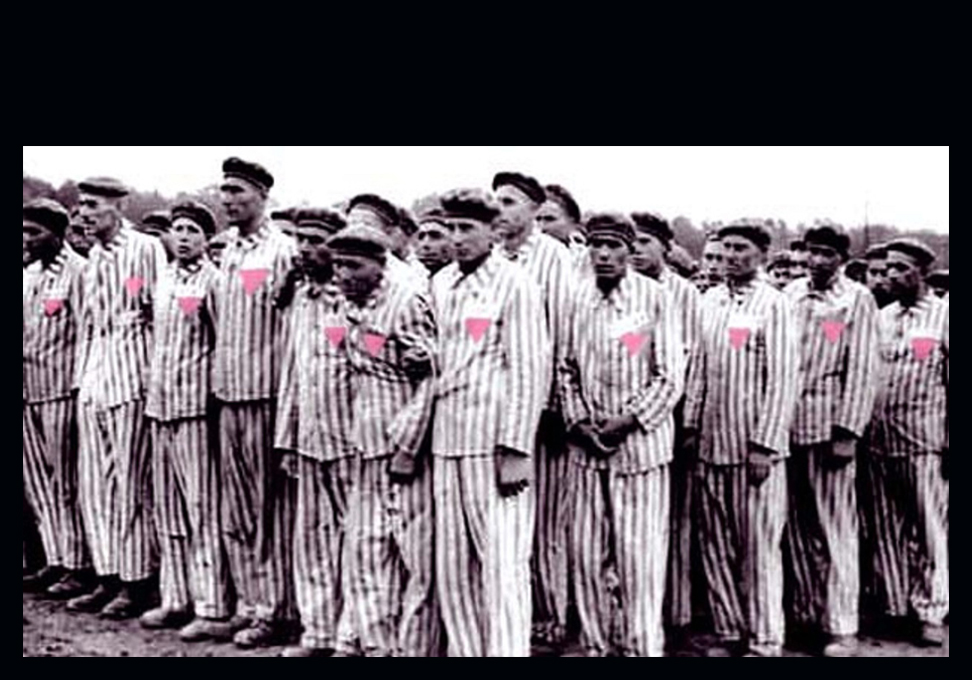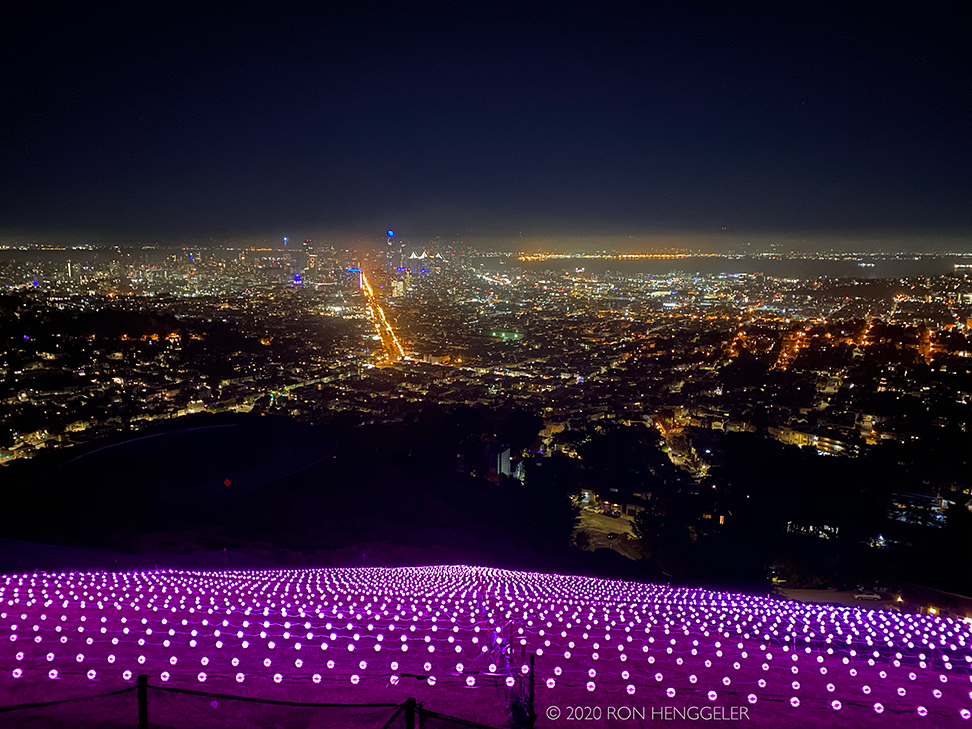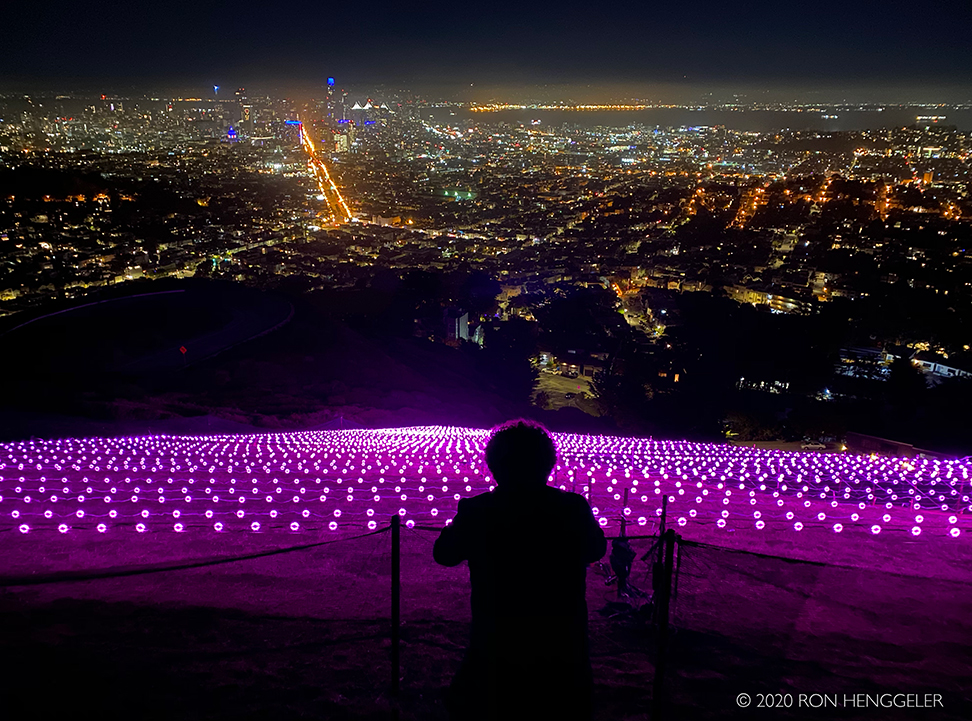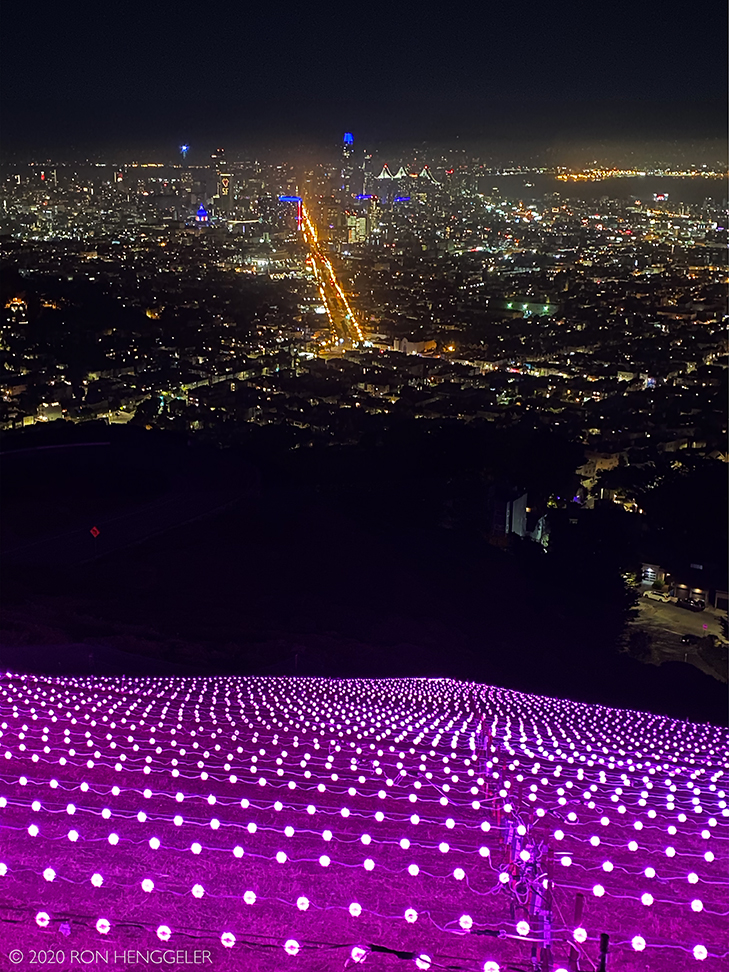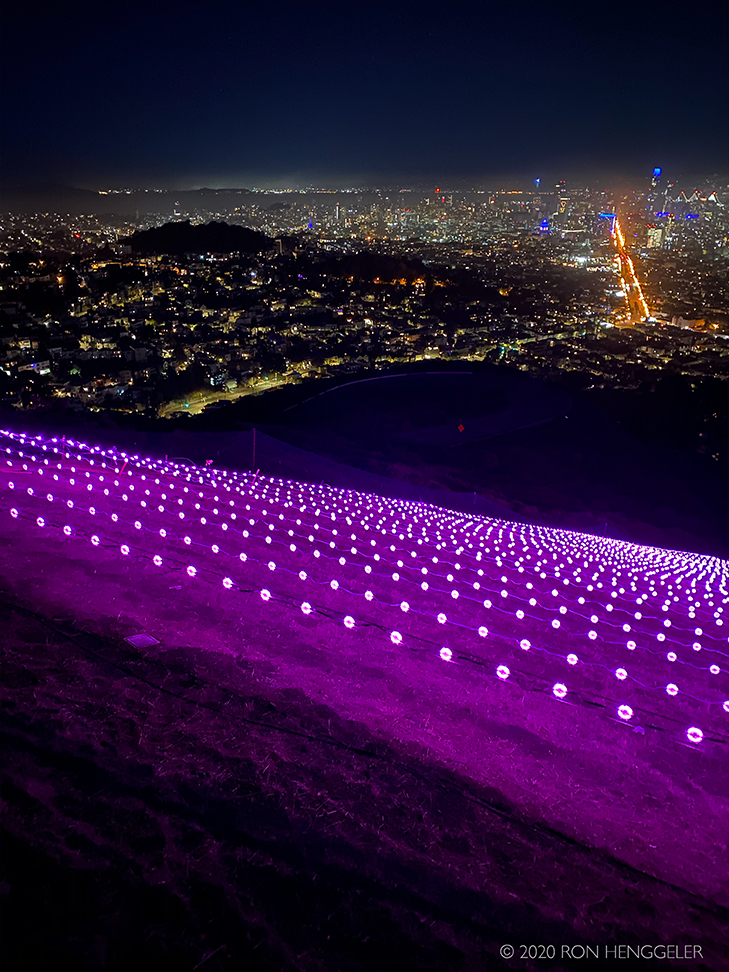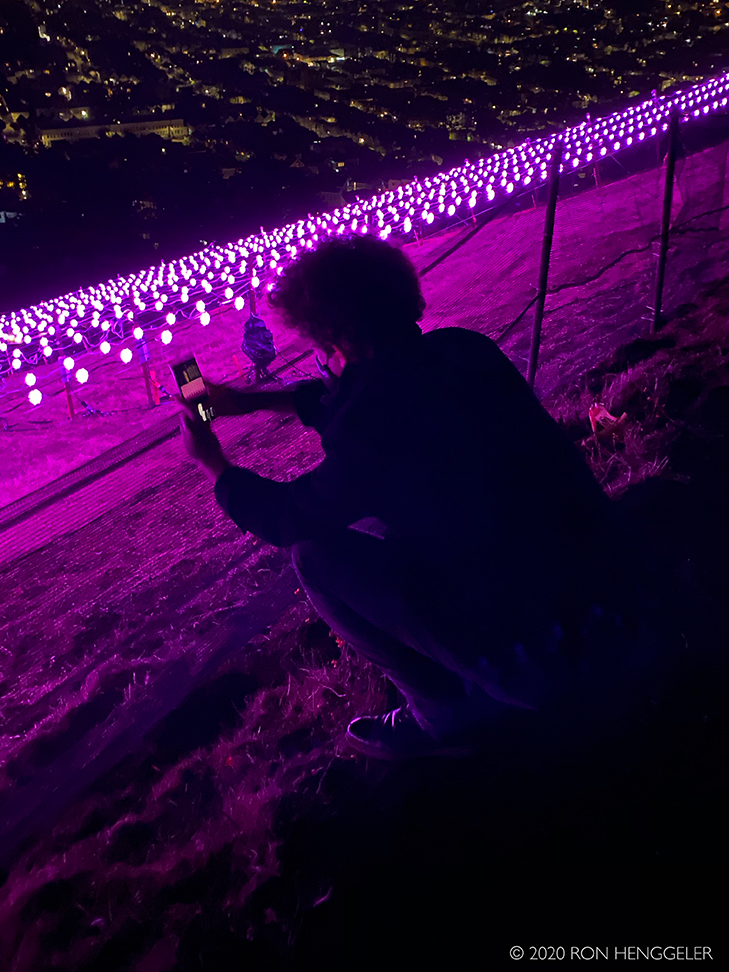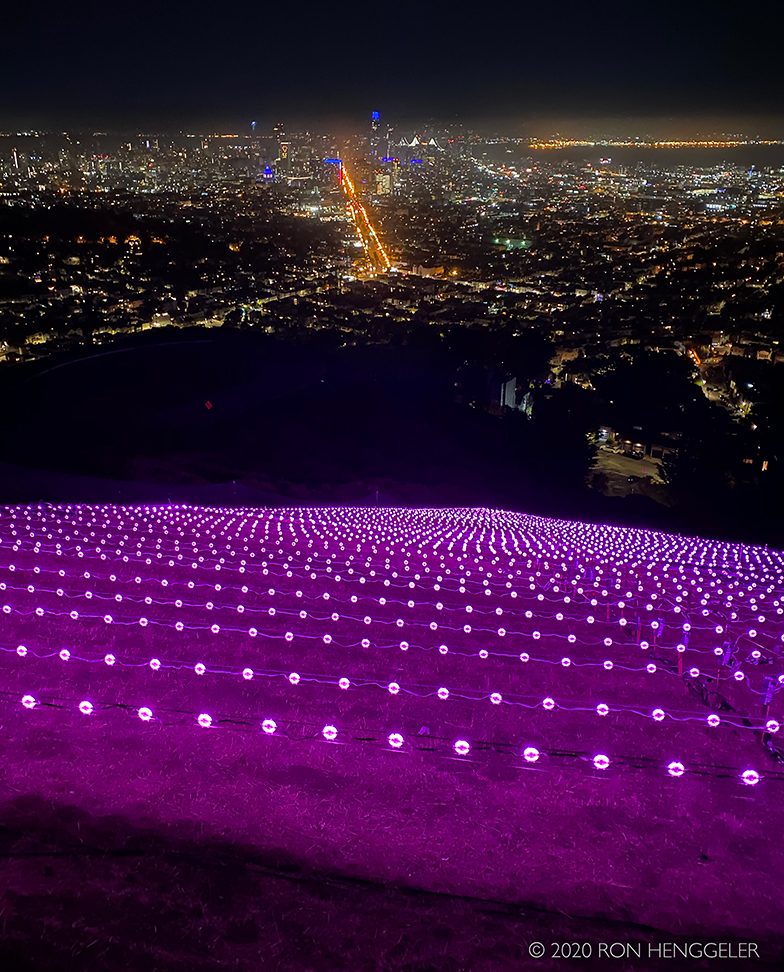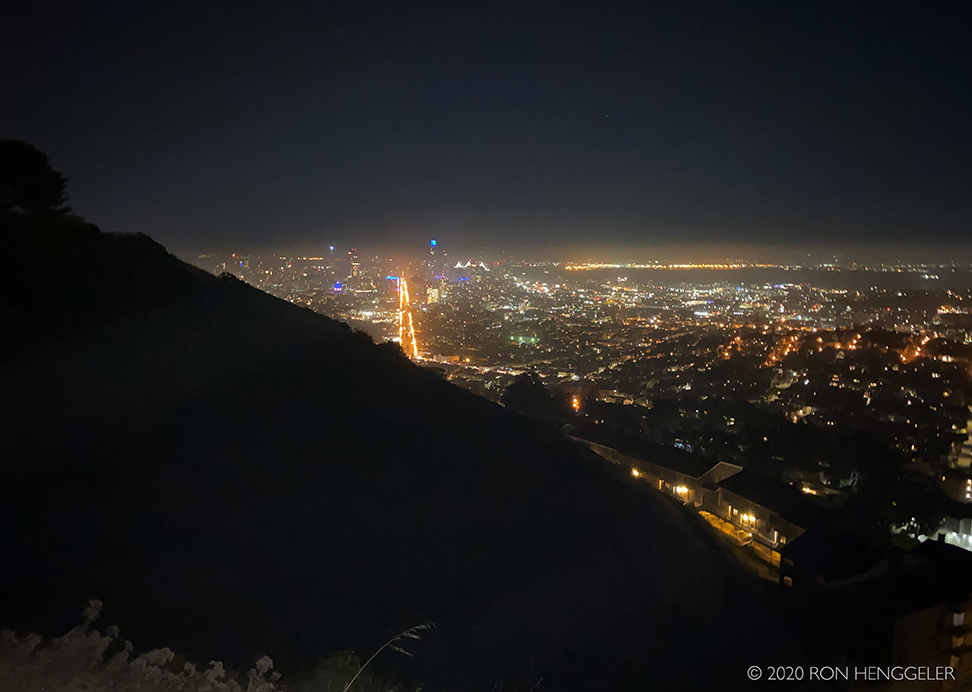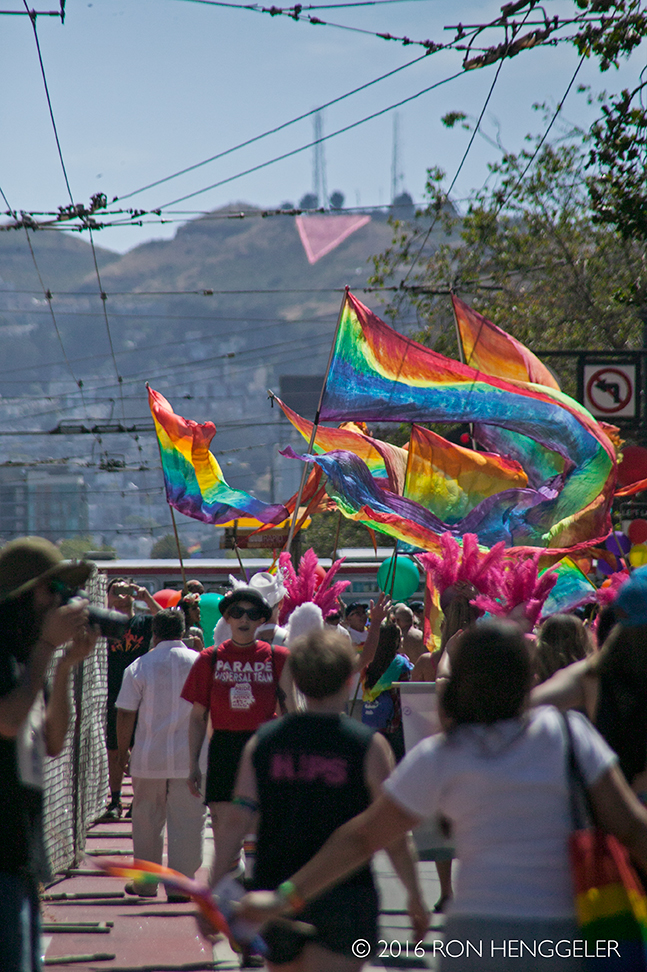RON HENGGELER |
July 11, 2019
The 25th Annual Pink Triangle on Twin Peaks in San Francisco
Because of the Coronavirus pandemic, there was no installation party of volunteers this year to assemble the Pink Triangle on Twin Peaks for Pride Weekend. Instead, this year's Pink Triangle was created with 2,700 LED nodes by Illuminate, the organization behind Leo Villareal’s “Bay Lights” on the Bay Bridge. Here are my photos from this year's Pink Triangle on Twin Peaks.
The Pink Triangle has been installed atop Twin Peaks in San Francisco for each Pride weekend in June since 1996, as a visible yet mute reminder of man's inhumanity to man. It is almost 200 feet across, nearly an acre in size, and can be seen for 20 miles.From: Pink Triangle History |
|
The pink triangle was used by the Nazis in concentration camps to identify and shame homosexuals. This symbol, which was used to label and shame, has been embraced by the gay community as a symbol of pride.From: Pink Triangle History |
However, in the 1930s & 1940s there was nothing celebratory about the pink triangle. Gays were forced to wear the pink triangle on their breast pockets in the concentration camps to identify them as homosexual to set them apart from other prisoners.From: Pink Triangle History |
San Francisco at dusk, as viewed from Twin Peaks in 2020 |
This year's Pink Triangle created with 2,700 LED nodes. |
|
|
The pink triangles were slightly larger than the other colored triangles so that guards could identify them from a distance. It is said that those who wore the pink triangles were singled out by the guards to receive the harshest treatment, and when the guards were finished with them, some of the other inmates would harm them as well.From: Pink Triangle History |
|
Triangles of various colors were used to identify each category of "undesirable": yellow for Jews, brown of Gypsies, red for political prisoners, green for criminals, black for anti-socials, purple for Jehovah's Witnesses, blue for immigrants, and pink for homosexuals.Pink Triangle History |
|
|
|
|
|
|
|
|
|
Discriminatory laws led to the creation of the Pink Triangle patch that homosexuals were forced to wear in Nazi concentration camps, and the Yellow Star of David badge that Jews were forced to wear under Nazi occupation, and a whole series of colored patches for each of their targeted groups of "undesirables". We try to prevent such hatred from happening again. Click here for further history information. |
|
|
|
|
|
|
|
|
|
The test of any democracy is how well it treats its minorities. The Third Reich demonstrates how easily a government can devise minority scapegoats. Branding homosexuals as criminals let most Germans feel comfortable looking the other way while the Nazis went about their persecution. Germany is today one of the gay-friendliest places on Earth with true safeguards for LGBTs, however tactics used there so long ago still occur today in other places. While most nations are continually progressing, dozens others are ever more oppressive, less and less tolerant and less inclusive, and are violators of human rights. Many LGBTs in those areas will spend the unforeseen future living in utter fear. |
78 countries where homosexuality is still illegal |
|
|
|
|
|
|
|
|
|
|
At the end of the war, when the concentration camps were finally liberated, virtually all of the prisoners were released except those who wore the pink triangle. Many of those with a pink triangle on their pocket were put back in prison and their nightmare continued.From: History |
|
|
|
|
The annual Pink Triangle on Pride Weekend in 2012, as viewed from Eighth and Market in San Francisco. |
To learn more about San Francisco's annual Pink Triangle, go to:The Pink TriangleTo learn more about the organization that created the Bay Bridge Lights, and this year's LED Pink Triangle, go to: IlluminateThis year's LED Pink Triangle reported by:SF ChronicleBay Area ReporterSF Weekly |
Newsletters Index: 2020, 2019, 2018, 2017, 2016, 2015, 2014, 2013, 2012, 2011, 2010, 2009, 2008, 2007, 2006
Photography Index | Graphics Index | History Index
Home | Gallery | About Me | Links | Contact
© 2020 All rights reserved
The images oon this site are not in the public domain. They are the sole property of the
artist and may not be reproduced on the Internet, sold, altered, enhanced,
modified by artificial, digital or computer imaging or in any other form
without the express written permission of the artist. Non-watermarked copies of photographs on this site can be purchased by contacting Ron.


